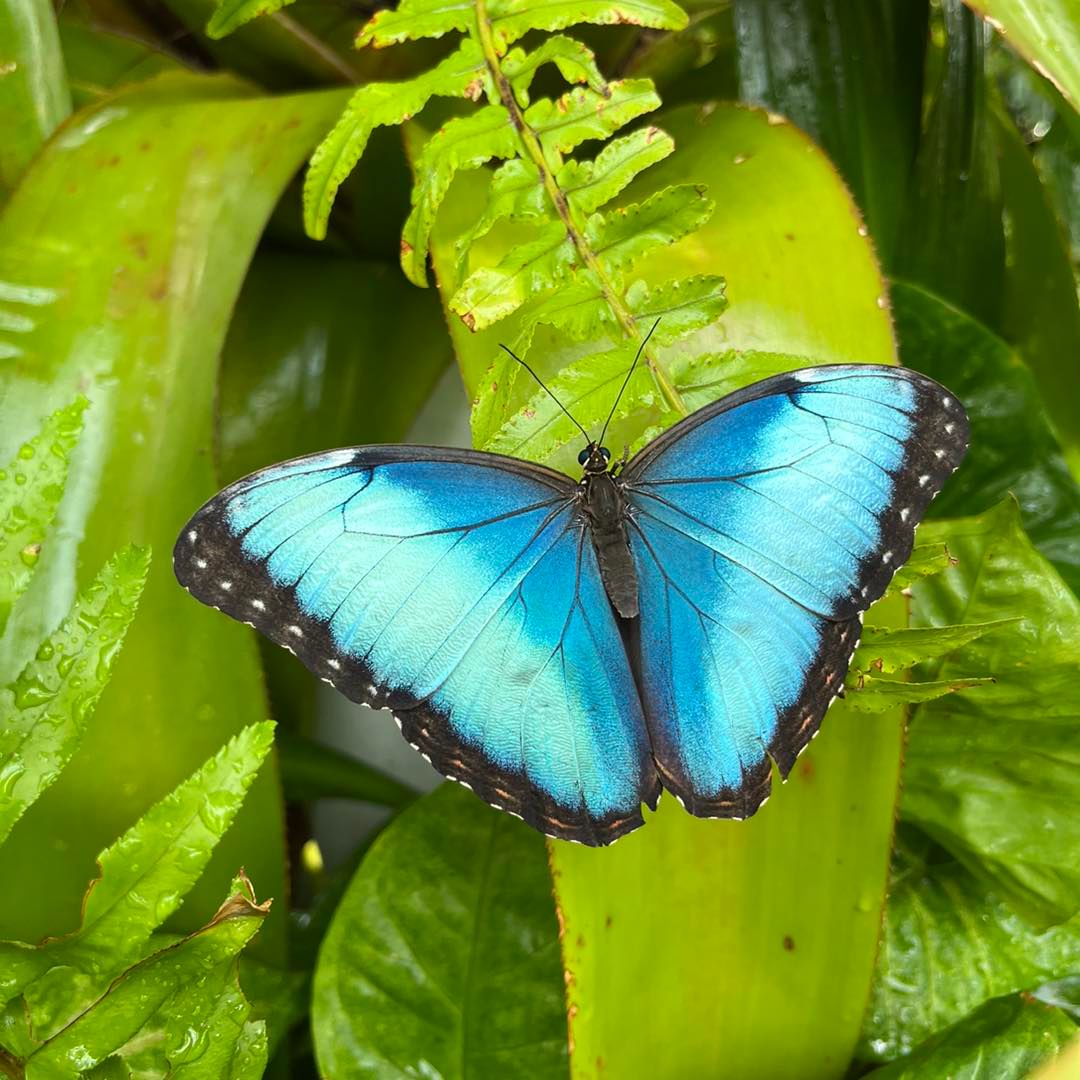– The protective coloration of blue morpho butterfly wings and its significance for survival
– The role of folded wings in predator avoidance for the blue morpho
– Insights into behavioral adaptations of the blue morpho that contribute to its conservation
– The importance of habitat preservation and conservation efforts for sustaining blue morpho populations
The mesmerizing iridescence of the blue morpho butterfly is a spectacle to behold, its wings reflecting a vivid azure hue that captures the curiosity of both scientists and nature enthusiasts alike. However, this butterfly, belonging to the species Morpho menelaus, displays fascinating behavior when it comes to landing; it routinely folds its wings. This behavior is not an act of mere whim but an evolved strategy critical to its survival.
The blue morpho butterfly, primarily found in the tropical forests of Latin America, has evolved a dual-color design on its wings as a defense mechanism. The outer wings exhibit a brilliant blue not due to pigmentation but rather the microscopic scales on the wings that reflect a distinct wavelength of light. When the butterfly alights, it conceals this spectral display by folding its wings vertically over its back, revealing the undersides of its wings, which are a dull brown with eye spots. This sudden vanishing of color serves as a cunning camouflage, blending the insect into the background to escape the sharp eyes of potential predators such as birds, lizards, and frogs.
Predators that rely on their vision to hunt are often deceived by this quick change in coloration, unable to distinguish the now inconspicuous butterfly from its surroundings. The cryptic pattern on the underside of the wings mimics the appearance of dead leaves and tree bark, providing an effective disguise in the butterfly’s forest habitat. This tactic exemplifies Batesian mimicry, where a harmless species imitates the warning signals of a harmful species to avert predation.
Delving deeper into the behavior of the blue morpho, one can understand how such adaptations have ensured its continuity through evolutionary pressures. The butterfly’s wing-folding behavior is an active response to environmental cues, often performed upon landing to avoid detection by predators that may be present. The timing of this action is crucial; the blue morpho must react swiftly to threats, as even a momentary delay can lead to its demise.
This conservation strategy adopted by the blue morpho is complemented by its flight pattern. When in flight, the flash of the wings’ blue undersides can confuse would-be predators, the bright color appearing and disappearing as the wings open and close. Consequently, the blue morpho engages in erratic flight, coupled with reflective wing surfaces, creating a disorienting visual effect that can thwart the pursuit of predators.
Blue morphos exhibit another intriguing behavior to further draw attention away from their vulnerable bodies – the display of false heads. At the lower wingtips, the color patterns combined with the eye spots mimic the appearance of a head, complete with antennae mimicked by wing extensions. This misdirection can lead predators to attack the least critical part of their prey, allowing the blue morpho a chance to escape.
The blue morpho’s habitat, which spans across the tropical rainforests of Central and South America, is a rich ecosystem that supports biodiversity but is unfortunately met with various threats. Deforestation and habitat fragmentation are key concerns that disrupt the delicate balance of this environment. This butterfly’s reliance on specific host plants for their larvae means any vegetation loss can significantly impact their populations.
Conservation efforts to protect and restore the natural habitats of blue morpho butterflies are vital. Researchers and environmentalists emphasize the importance of maintaining the structural integrity of forest landscapes that support this species’ lifecycle. Programs that discourage deforestation and promote sustainable land use practices have become increasingly relevant in regions where blue morphos live.
Environmental education initiatives have taken root in many communities, aiming to foster a deeper understanding and appreciation of the blue morpho butterfly. If managed responsibly, eco-tourism can support these initiatives, providing financial incentives for countries to preserve natural habitats while benefiting local populations economically.
To appreciate the full spectrum of the blue morpho’s ecological significance, one must consider its role in the broader tapestry of tropical ecosystems. As a pollinator, the blue morpho participates in the vital process of plant reproduction, bridging the reproductive needs of diverse floral species. The conservation of the blue morpho inadvertently aids in preserving countless other species connected through the intricate web of life that thrives in rainforests.
The efforts to protect blue morphos and their habitats contribute to a wider cause in environmental conservation. They highlight the interconnectedness of species and the necessity of comprehensive ecological stewardship. As scientists, conservationists, and policymakers continue to work towards safeguarding these celestial-winged insects, every action taken in their favor is a step toward sustained biodiversity and ecological balance in our ever-changing world.
In summary, the blue morpho butterfly’s wing-folding behavior is a superb example of evolution’s response to the relentless pressure of predation. This deceptively simple concealment epitomizes the elaborate dance of survival and identity in Latin America’s forests. The conservation of the blue morpho presents an opportunity to secure not just the survival of a single species but also to shield an entire ecosystem. The acquisition of knowledge and proactive stewardship promises a future where the breathtaking blue that flashes through the forest can continue to do so, serving as a testament to the resiliency and adaptability of nature.
*****
Source Description
The blue morpho typically keeps its wings folded when it lands to hide its beautiful blue coloring. This helps protect them from predators like birds, lizards, and frogs.
📷: Brie Wilson

